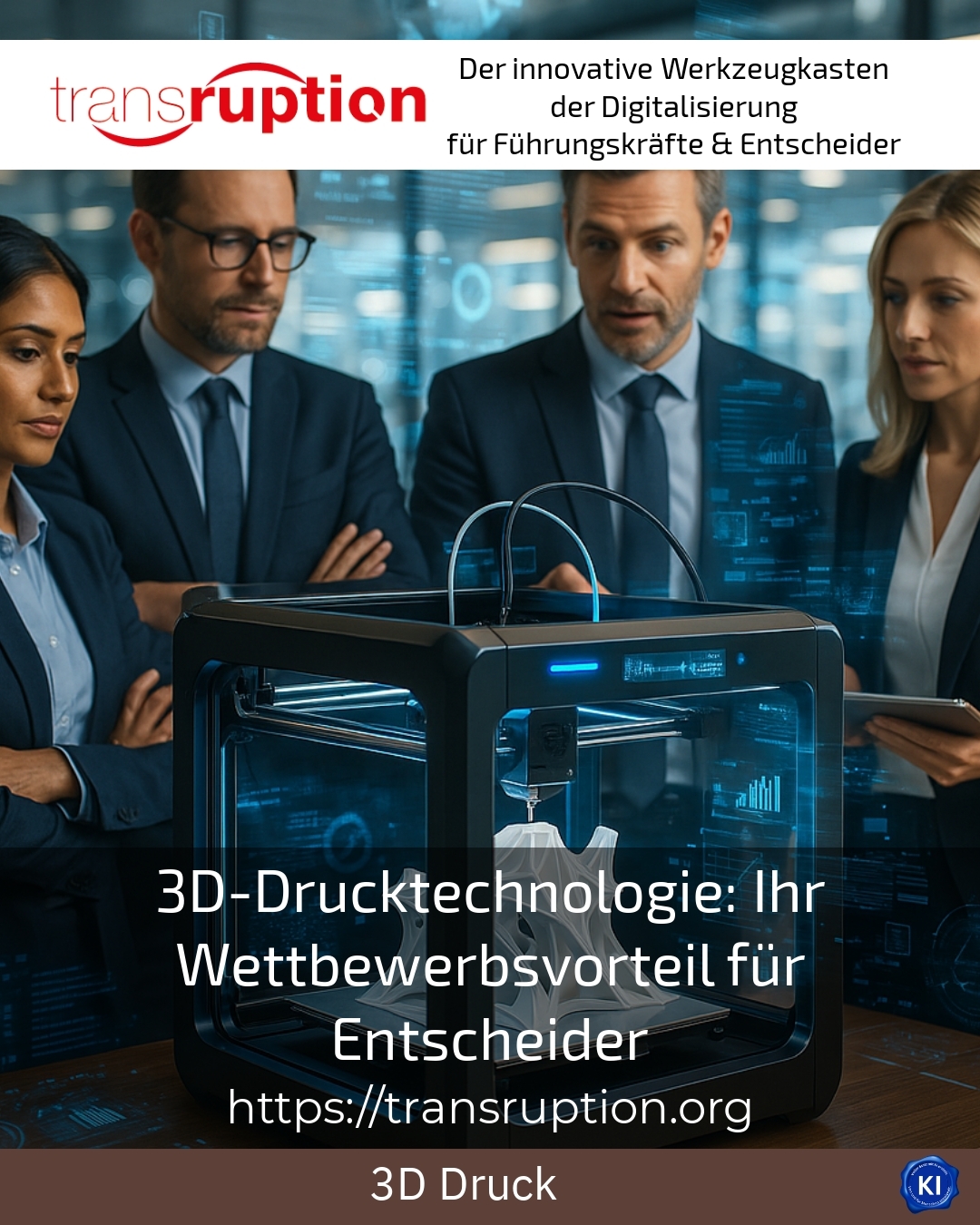3D printing technology opens up new opportunities for companies to remain agile and competitive. It is crucial for decision-makers to recognise the potential of this innovative method and use it in a targeted manner in their operations. Additive manufacturing helps to shorten development cycles, save costs and flexibly produce customised solutions.
More flexibility and speed in product development thanks to 3D printing technology
Modern 3D printing technology makes it possible to produce prototypes and small batches much faster than with traditional methods. Companies from the automotive industry report that they can test new components in days instead of weeks thanks to 3D printing. This offers a decisive advantage in development and design in particular, as adjustments can be implemented flexibly and cost-effectively.
Complex components with overlapping cavities are also manufactured in the aerospace industry, which would be almost impossible to realise using conventional processes. This leads to a significant reduction in weight while maintaining stability and can sustainably improve the energy efficiency of aeroplanes. This allows companies to save time and gain a competitive edge.
In medical technology, 3D printing technology supports the production of customised implants and surgical tools. The rapid availability of customised solutions helps to optimise treatment outcomes while reducing delivery times.
Savings and process optimisation through additive manufacturing
It is essential for decision-makers to consider the total costs. 3D printing processes indirectly reduce warehousing costs because spare parts can be manufactured on demand. This reduces excess stock and tied-up capital. For example, 3D printing is increasingly being used in machine maintenance to produce spare parts quickly and flexibly without long delivery times or expensive warehousing.
A practical example from industry shows that storage space can be reduced by up to 17 % by consolidating stock using 3D printing. For slow movers in particular, there is no need to keep large safety stocks, which saves space and costs.
In addition, additive manufacturing enables the production of small batches without the necessary tools or moulds of conventional processes. This is particularly attractive for start-ups and SMEs that work with limited budgets but still want to react quickly to market developments.
Best practice at the customer (name hidden due to NDA contract)
BEST PRACTICE at the customer (name hidden due to NDA contract) A medium-sized mechanical engineering company uses 3D printing technology to manufacture spare parts directly on site. This has significantly reduced machine downtime. At the same time, there was no need to purchase expensive spare parts from external suppliers, meaning that the production flow remained continuous.
New business opportunities through customised and complex components
3D printing technology expands design freedom and enables the production of geometrically complex parts. This results in components that are difficult or impossible to produce using traditional manufacturing processes. Industries with high demands on lightweight construction and material efficiency in particular benefit from this.
In the automotive industry, for example, customised production aids and complex assembly parts are manufactured additively, which significantly increases production efficiency. The technology also enables customised requirements to be implemented more quickly, which represents a clear competitive advantage for sales.
The additive manufacturing process also opens up new creative possibilities for design and architectural projects. Complex structures and intricate shapes can be realised economically and quickly, which would not be possible with conventional methods.
Best practice at the customer (name hidden due to NDA contract)
BEST PRACTICE at the customer (name hidden due to NDA contract) An innovative automotive company has produced special bracket systems for the assembly of interior components using 3D printing. In-house production enabled customisation at every stage of production, ensuring a rapid market launch of the new vehicle model.
3D printing technology as the basis for sustainable and efficient business
Sustainability is becoming increasingly important in many industries. Additive manufacturing supports this, as it significantly reduces material waste. During production, components are built up in layers, which minimises excess material. This saves resources and reduces production costs in the long term.
In addition, the digitalisation of manufacturing enables decentralised production, which shortens transport routes and thus improves the carbon footprint. Companies report that in-house 3D printing enables them to better manage supply chain risks and react more flexibly to market changes.
For many decision-makers, this is a decisive argument in favour of integrating 3D printing technology into their business processes, as it combines both ecological and economic benefits.
Best practice at the customer (name hidden due to NDA contract)
BEST PRACTICE at the customer (name hidden due to NDA contract) A manufacturer of specialised machinery greatly reduced its stock of spare parts. Instead, it now produces critical components on demand using 3D printing. This not only reduces storage costs, but also promotes environmentally conscious management through lower material consumption and less transport.
My analysis
3D printing technology opens up numerous opportunities for decision-makers to make their companies more flexible, faster and more effective. It supports rapid product development, optimises warehousing and reduces costs through needs-based production. The additive manufacturing process also promotes sustainable production methods with reduced material requirements. This makes 3D printing technology a real competitive advantage for companies of all sizes and in all industries that want to position themselves for the future.
Further links from the text above:
6 underestimated benefits of 3D printing for your supply chain
Advantages of 3D printing for small businesses
What are the advantages of 3D printing?
Shape the future: 3D printing in companies
For more information and if you have any questions, please contact Contact us or read more blog posts on the topic TRANSRUPTION here.
















